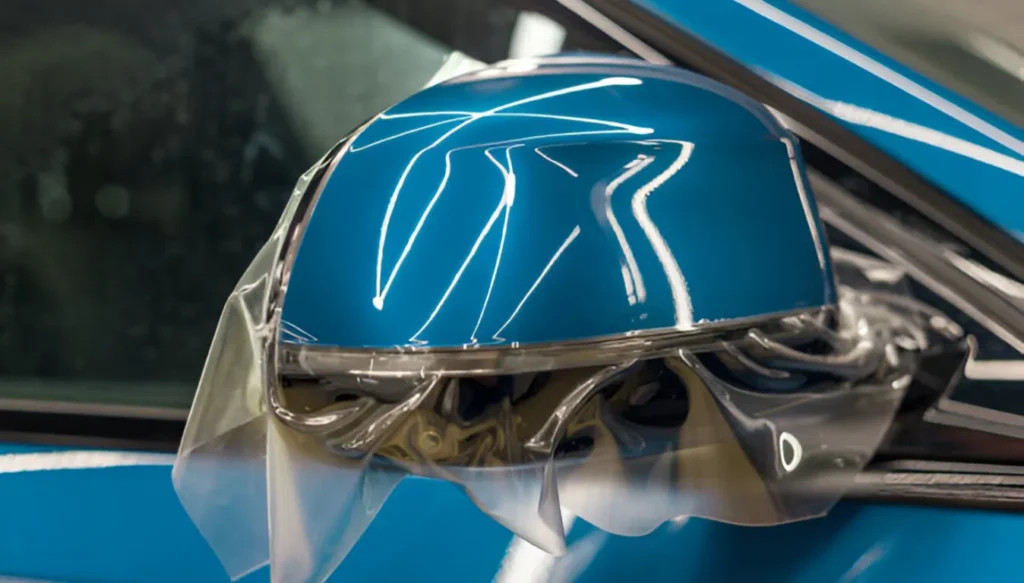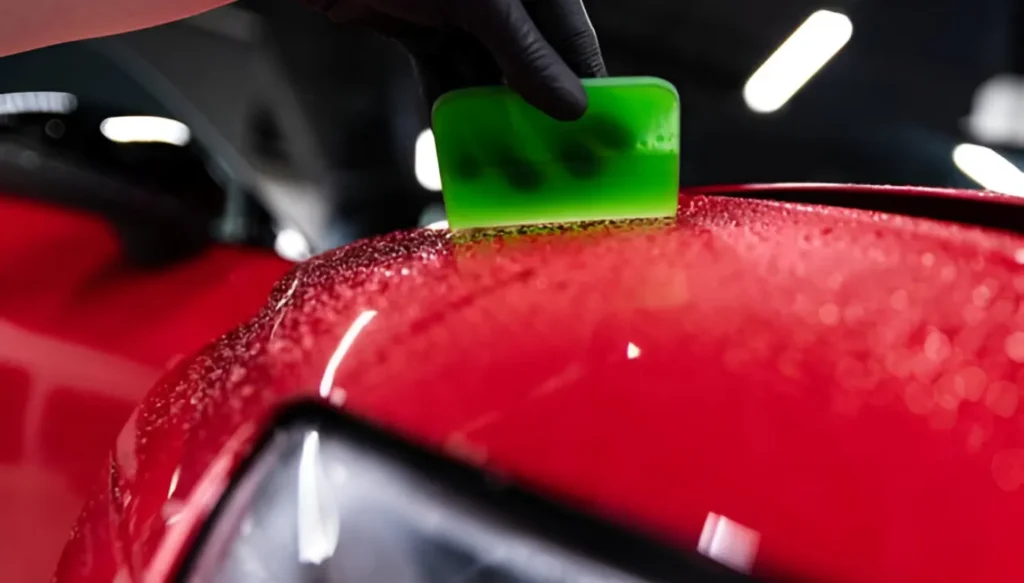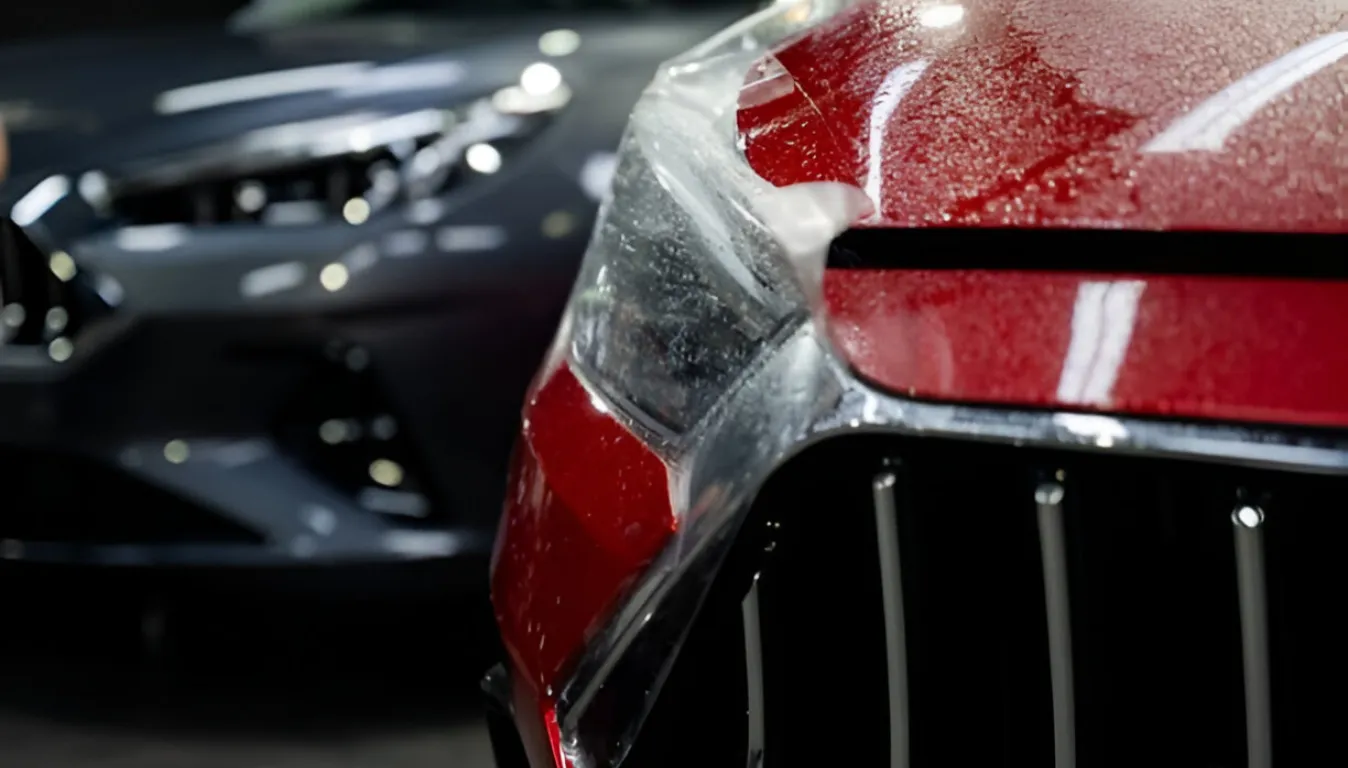Car owners love the shine and sleek finish of their vehicle’s paint, but the sun can be a silent destroyer. UV rays and extreme heat gradually fade, oxidize, and weaken car paint, leading to a dull and worn-out look. Many people turn to Paint Protection Film (PPF) as a shield against sun damage, but does it actually work?
Paint Protection Film Protect the Sun. In this guide, we’ll explore whether PPF truly protects against UV rays, how it compares to other solutions like ceramic coating and window tinting, and what factors impact its effectiveness. Let’s find out if PPF is a smart investment for sun protection.
How UV Rays and Heat Affect Vehicle Exteriors
The Science Behind Paint Fading and Oxidation
The sun’s UV rays break down a car’s clear coat, causing oxidation and fading over time. This is why cars left in the sun often lose their shine and develop a dull, chalky appearance.
Heat exposure also speeds up paint damage, especially in hot climates. High temperatures cause the paint to expand and contract, leading to cracks and peeling. Without proper protection, your car’s glossy finish won’t last long, making UV protection essential for long-term vehicle care.

What is Paint Protection Film? Paint Protection Film Protect the Sun
A Transparent Shield for Your Car’s Paint
Paint Protection Film (PPF) is a thin, clear, and durable layer applied to a vehicle’s exterior to protect it from scratches, rock chips, and environmental damage. Made from urethane material, PPF is flexible and self-healing, meaning minor scratches disappear with heat. Unlike ceramic coating or wax, PPF provides a physical barrier that absorbs damage before it reaches the paint. Many modern PPFs also come with UV-resistant properties, helping to slow down paint fading and oxidation.
Does PPF Actually Protect Against Sun Damage?
PPF’s UV-Blocking Abilities
While Paint Protection Film (PPF) can’t completely block UV rays, many high-quality films include UV-resistant properties that help slow down paint fading and oxidation.
PPF acts as a protective barrier, reducing direct exposure to sunlight and preventing heat damage. However, unlike ceramic coating or window tinting, it doesn’t reflect heat or fully stop UV penetration. For the best sun protection, combining PPF with ceramic coating or UV window tint is a smart choice.
Comparing PPF With Other Sun Protection Methods
PPF vs. Ceramic Coating, Tint, and Wax
Paint Protection Film (PPF) vs. Ceramic Coating: PPF provides a physical barrier against scratches and UV rays, while ceramic coating offers hydrophobic properties and enhances shine.
PPF vs. Window Tint: Window tint mainly protects interior surfaces from UV damage, while PPF protects the paintwork.
PPF vs. Wax: Wax provides temporary UV protection, but it wears off quickly. For long-lasting sun protection, combining PPF with ceramic coating is the best solution.
Factors That Affect PPF’s UV Protection Efficiency
What Impacts PPF’s Sun Protection?
Not all Paint Protection Films (PPF) offer the same UV resistance. High-quality brands like XPEL, 3M, and SunTek include UV inhibitors that slow down paint fading.
Film thickness also plays a role—thicker films provide better protection. Additionally, PPF color matters; clear films protect without changing appearance, while tinted PPF offers extra UV filtering.
For maximum protection, combining PPF with ceramic coating enhances UV resistance and extends your car’s glossy finish.
How to Choose the Right PPF for Sun Protection
Picking the Best UV-Resistant PPF
Not all Paint Protection Films (PPF) are equal when it comes to UV protection. Look for premium brands like XPEL Ultimate Plus, 3M Scotchgard, or SunTek Ultra, which include UV-blocking technology to reduce paint fading.
Check the film’s thickness and warranty—thicker films generally offer better durability. Also, consider ceramic-infused PPF, which enhances UV resistance. To ensure long-lasting sun protection, professional installation is recommended for a seamless, bubble-free application.

PPF Maintenance & Longevity Under Sun Exposure
How to Keep PPF Effective Against UV Rays
To extend the life of your Paint Protection Film (PPF), regular maintenance is key. Wash your car with pH-neutral soap, avoiding harsh chemicals that can weaken the film.
For extra protection, apply ceramic coating over PPF to enhance UV resistance. Avoid prolonged exposure to extreme heat and park in shaded areas when possible. High-quality PPF lasts 5–10 years, but proper care ensures it stays clear, glossy, and effective against sun damage.
Myths About PPF & Sun Protection
Clearing Up Common Misconceptions
Many believe Paint Protection Film (PPF) makes a car completely UV-proof, but that’s not true. While PPF helps reduce paint fading, it doesn’t block all UV rays.
Another myth is that PPF can replace ceramic coating or window tint, but each serves a different purpose. PPF protects the exterior, tint shields the interior, and ceramic coating adds extra UV resistance. For the best results, a combination of these protections works best.
Conclusion: Is PPF a Good Investment for Sun Protection?
Paint Protection Film (PPF) is a great way to protect your car’s paint from UV rays and sun damage. While it helps prevent fading and oxidation, it’s not 100% UV-proof. For the best protection, combine PPF with ceramic coating or regular maintenance. If you drive in hot climates, investing in high-quality, UV-resistant PPF is worth it. Want long-lasting paint protection? Get professional PPF installation today and keep your car looking new for years!
